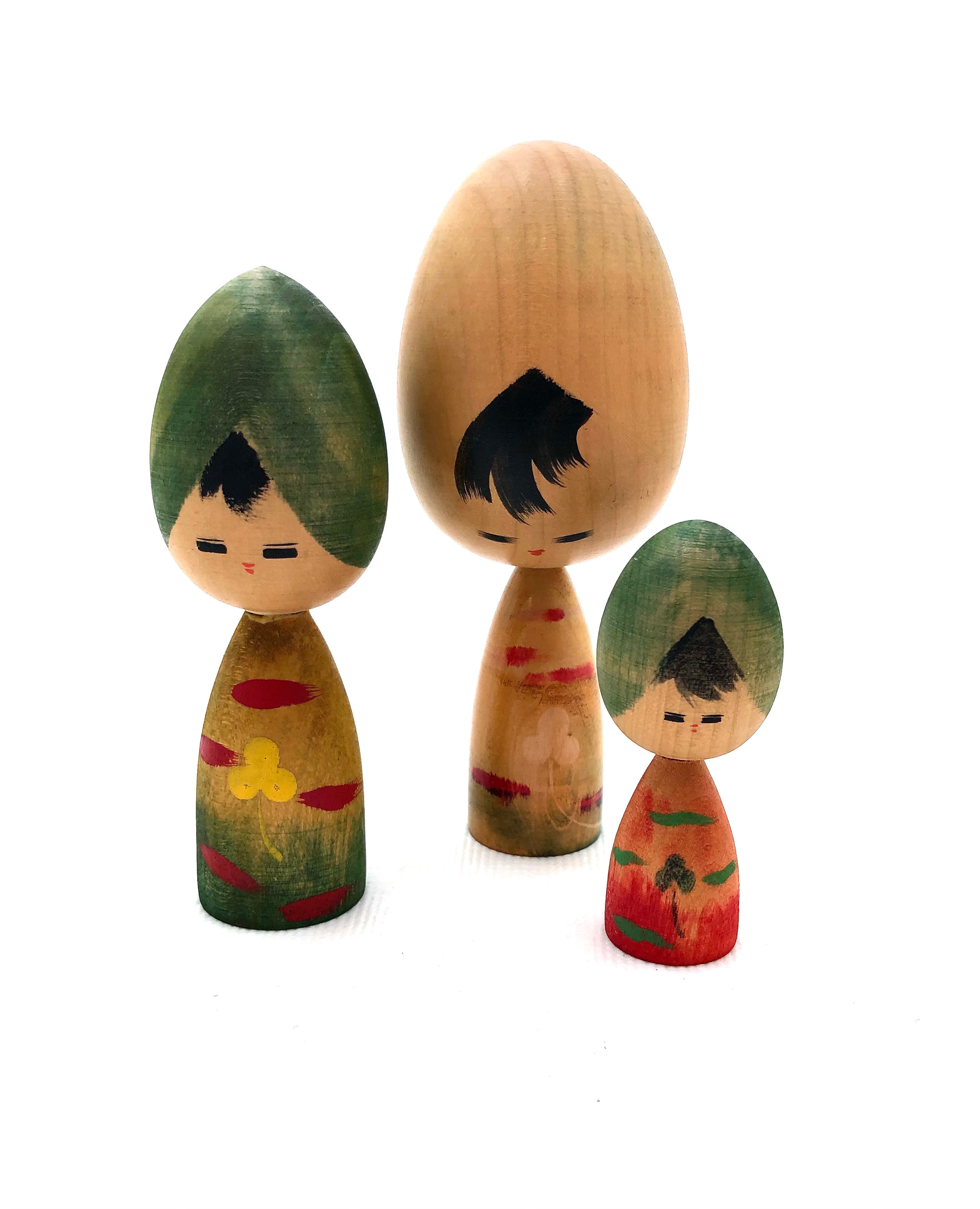
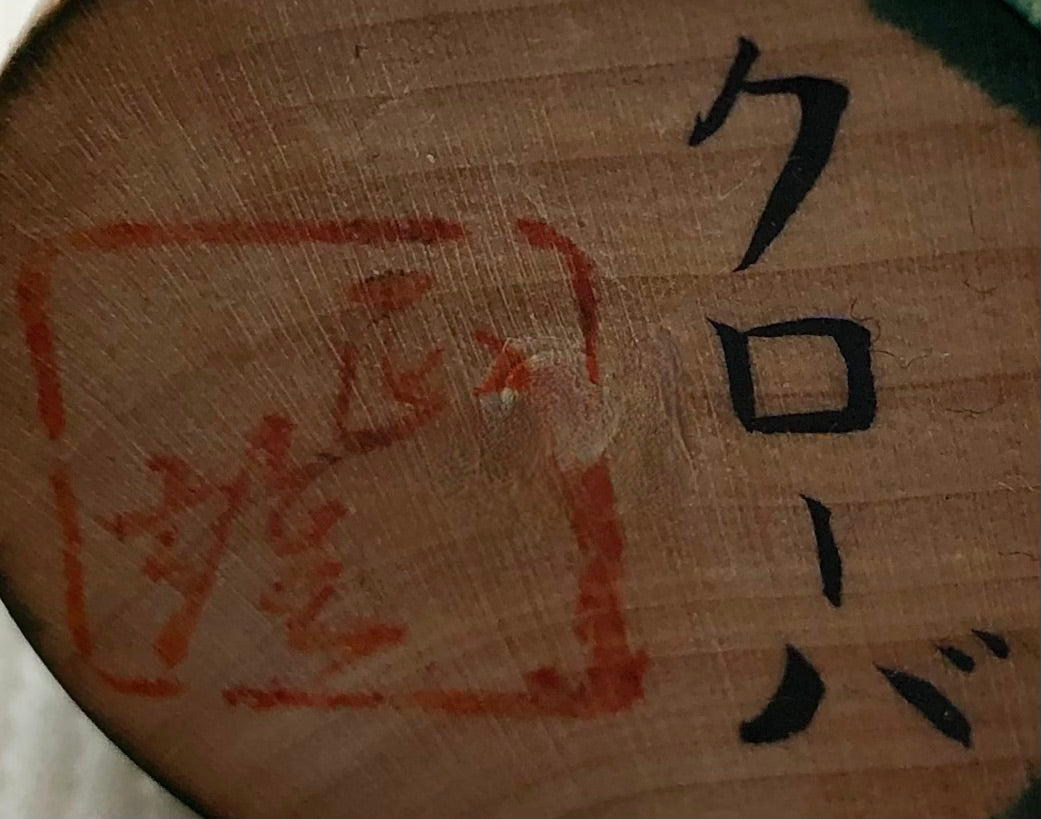
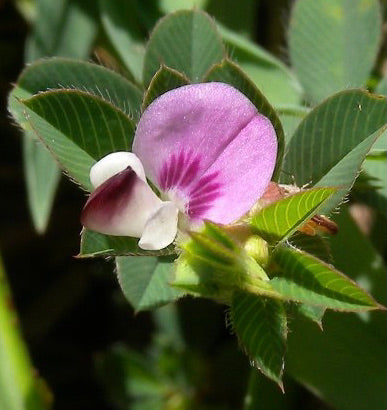
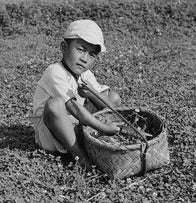
Vintage Sosaku Kokeshi Set Entitled: Kurōbāgāru no Mittsu-ri no Shimai, (Clover Girls) by Watanabe, Masao
Dimensions: 5-1/2”h; 5-0”h; 3-0”h
These three rare dolls represent sisters and are quite unusual with exaggerated, egg-like shape heads. Each body has clover drawings suggestive of the natural flora seen throughout the countryside. The heads have a wisp of bangs on each with simple downturned eyes and red noses. The top of the heads are green representing the fields of clover and the bodies are detailed in red, yellow, and green, with a small clover in the center of each body. The largest doll has a clear lacquer finish and the other two have a candle wax finish. Two of the dolls are signed and have red stamps on the bottom. The smallest has a tiny stamp representing the artist's studio.
This Tanka, (Long Poem) was associated with the creation of this short series of dolls:
It’s all I have to bring today
this, and my heart beside
this, and my heart, and all the fields and all the meadows wide
be sure you count — should I forget someone the sum could tell
this, and my heart, and all the Bees which in the Clover dwell.
Condition: Very Good, original condition, with no fading or loss of color and consistent with age and standards of collectible Folk Art. There are finish/textural differences between dolls.
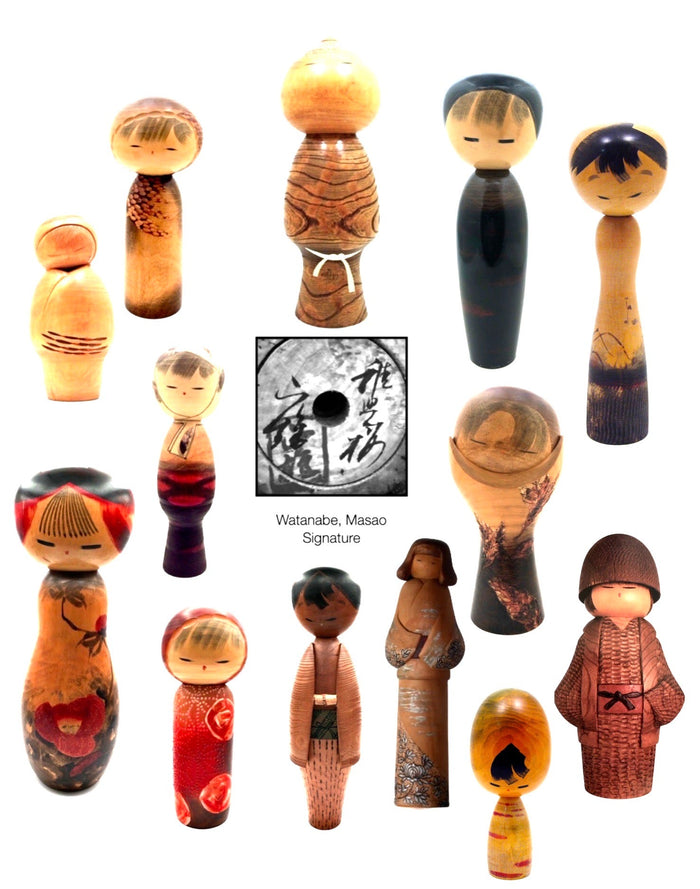
Artisan
Woodworker: Watanabe, Masao
1917-2007
Biographical History:
Watanabe-san is considered to be one of the greatest Sosaku Kokeshi artists in all of Japan. Born in Fukushima, Watanabe-san studied under Traditional Yajirou Master Sato, Tatsuo of Miyagi Prefecture. Arguably, the most popular and prolific of the 20th/c Sosaku Kokeshi artists, he began his craft in the early 1950s. His most famous Kokeshi themes are that of ‘innocence’ (Mushin), and his doll entitled: Chigo Zakura (Cherry Blossom Child) won the Minister’s Award and was presented to the Beatles in 1965, after their appearance in Japan with Sir Joseph Lockwood, Chairman of EMI Record Distributors, England. A multiple award winner from 1963-1981 in Kokeshi competitions around the world (Prime Minister's prizes for the works of "Chigozskura" in 1963 and "Shojo" in 1981), along with numerous prizes by the Modern Kokeshi Artist Association and JETRO. He held two exhibitions in Japan and was exempt from the examination of the All Japan Kokeshi Contest, a Member of the Nippon Kokeshi Artistic Handicraft Association. His works are permanently exhibited at the Nuremberg Toy Museum in Germany.

Collector's note – descriptive qualities, standard characteristics & ornamentation styles:
Of all the Kokeshi the emphasis is on the color of the natural wood and texture, and his diversity of form is the most recognizable characteristic of his dolls. The representation of clothing is seen in the use of the diverse rendering of Kimono, Yukata, and Haori complemented by the painted details that are common throughout his works. Several dolls not only show wonderful color rendition as well as textured/ raised applications resembling Shibori, a type of tie-dyeing that gives texture to the garment. He also prominently features the rose and camellia as a central motif along with extremely expressive eyes throughout the range of ages represented in his works.
Signature Research:
We heard from our colleague at Soulportals KokeshiVillage, a website researching vintage and contemporary Kokeshi artists and signatures. It was brought to our attention that Watanabe subcontracted an artist named Sato Norio to reproduce large numbers of his Kokeshi in the 1960s because of an enormous number of orders for his award-winning design Chigazokaura. Watanabe's signature for pieces designed and crafted by him is shown on this page celebrating a number of his award-winning dolls. Nario's versions were entitled Plum Grove and approved/attributed to Masao but not crafted by him.
Explore & Learn More about Woodworker: Watanabe, Masao